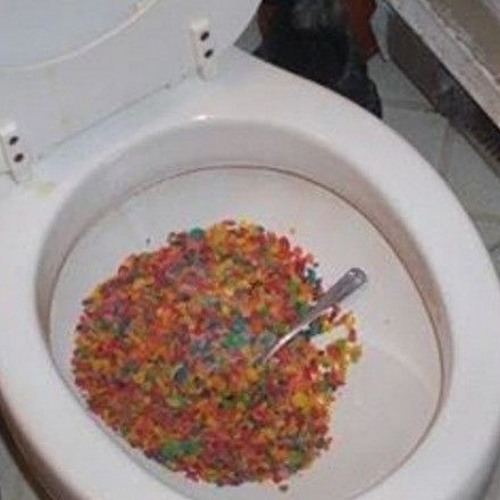Can One to Dispose of Food in the Toilet?
Can One to Dispose of Food in the Toilet?
Blog Article
How do you really feel with regards to What Can Happen If You Flush Food Down the Toilet??

Intro
Many people are commonly confronted with the dilemma of what to do with food waste, specifically when it involves leftovers or scraps. One typical question that occurs is whether it's fine to purge food down the toilet. In this short article, we'll explore the reasons that people could consider purging food, the effects of doing so, and alternate methods for correct disposal.
Reasons that people may think about flushing food
Lack of recognition
Some people may not understand the possible injury caused by flushing food down the toilet. They might incorrectly believe that it's a safe technique.
Benefit
Flushing food down the commode might seem like a fast and simple remedy to taking care of undesirable scraps, especially when there's no nearby trash can available.
Laziness
Sometimes, people might merely choose to flush food out of large negligence, without thinking about the effects of their activities.
Consequences of flushing food down the commode
Ecological impact
Food waste that ends up in rivers can contribute to pollution and harm aquatic environments. Additionally, the water used to flush food can strain water resources.
Pipes issues
Purging food can result in clogged pipes and drains, triggering pricey pipes fixings and aggravations.
Sorts of food that must not be flushed
Fibrous foods
Foods with fibrous appearances such as celery or corn husks can obtain entangled in pipelines and cause obstructions.
Starchy foods
Starchy foods like pasta and rice can soak up water and swell, bring about obstructions in pipes.
Oils and fats
Greasy foods like bacon or food preparation oils need to never ever be flushed down the toilet as they can solidify and trigger obstructions.
Appropriate disposal methods for food waste
Making use of a waste disposal unit
For homes outfitted with garbage disposals, food scraps can be ground up and flushed through the pipes system. Nevertheless, not all foods appropriate for disposal in this manner.
Recycling
Certain food packaging products can be recycled, minimizing waste and lessening environmental impact.
Composting
Composting is an environment-friendly way to get rid of food waste. Organic materials can be composted and used to improve soil for gardening.
The importance of correct waste monitoring
Lowering ecological harm
Correct waste administration methods, such as composting and recycling, help minimize contamination and protect natural deposits for future generations.
Protecting pipes systems
By preventing the technique of flushing food down the bathroom, homeowners can prevent pricey pipes repairs and maintain the stability of their plumbing systems.
Conclusion
To conclude, while it might be tempting to flush food down the commode for comfort, it is essential to understand the prospective effects of this action. By embracing appropriate waste monitoring methods and taking care of food waste responsibly, individuals can add to healthier plumbing systems and a cleaner environment for all.
FLUSH FOOD DOWN THE TOILET?
FLUSHING FOOD CAN CAUSE BLOCKED DRAINS IN YOUR HOME
All of the plumbing fixtures in your home are connected to the same sewer pipe outside of your home. This outdoor sewer pipe is responsible for transporting all the wastewater from your home to the Council sewer mains. Even small pieces of food that go down the kitchen sink can cause problems for your sewer. It should therefore be obvious that flushing larger bits of food, such as meat, risks a clog in either the toilet itself or the sewer pipes. Flushing greasy food is even more problematic because oil coagulates when it cools, coating the interior lining of your pipes.
THE TOILET IS NOT A BIN
Food isn’t the only thing that people shouldn’t be flushing down the toilet. People use the toilet to dispose of all kinds of things such as tampons, makeup wipes, dental floss, kitty litter and even underwear. Water goes to great lengths to educate residents about the high costs and stress placed on wastewater treatment systems simply from people flushing the wrong stuff down the toilet. It costs taxpayers millions of dollars each year, and homeowners thousands in blocked drain repairs.
FLUSHING FOOD IS A WASTE OF WATER
Flushing food is a waste of our most precious resource - water. In June this year Level 1 water restrictions were introduced to protect water supply from drought conditions. Much of New South Wales continues to be affected by prolonged drought with recent figures revealing up to 97 per cent of the state remains in drought. Depending on whether you have a single or dual flush toilet, every single flush uses between five and 11 litres of water. In the current climate this is a huge amount of water to be wasting on flushing food that should be placed in the bin (or better yet, the compost).
https://www.jabplumbingsolutions.com.au/blog/can-you-flush-food-down-the-toilet

I ran across that blog entry about while scouting around the search engines. Do you know another person who is interested in the niche? Be sure promote it. Thanks a lot for taking the time to read it.
Make An Appointment Report this page